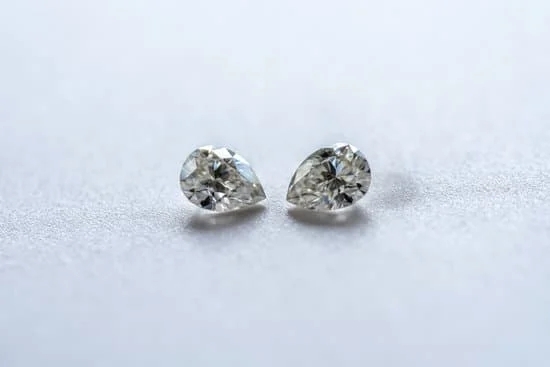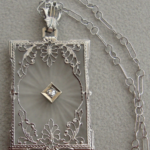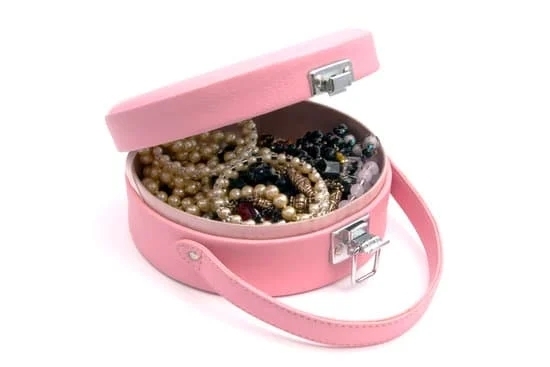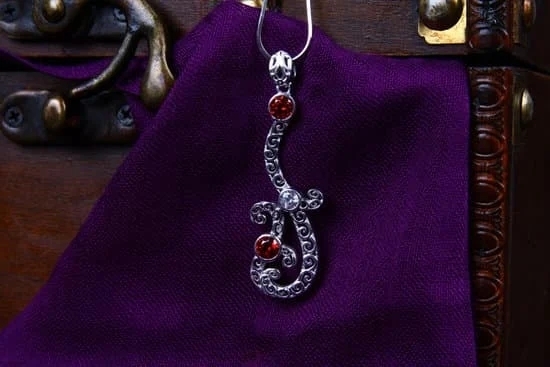Most people own some jewelry that has a combination of gold and gemstones including precious gems such as diamonds and rubies. Cleaning this type of jewelry is important, not just for aesthetic reasons but also so that the metal does not corrode and the stones do not become scratched.
Proper cleaning will preserve the piece for years to come. In this article, we’ll discuss how to clean gold and gemstone jewelry safely, ensuring your pieces look their best for years to come.
The first step in properly cleaning gold and gemstone jewelry is determining what kind of gems are being cleaned. Many people associate all gems with being similar but there are some that are much more delicate than others. For instance diamonds are the most resilient while Opals require more caution when it comes to cleaning them.
This is because they contain water within them which can evaporate if exposed to extreme temperatures or harsh chemicals. Therefore, it is important to research each gemstone before proceeding with cleaning it otherwise they may be permanently damaged.
Once you know what type of gems you have then you can begin proper cleaning of gold and gemstone jewelry. A popular method is using a mixture of warm water and mild dish soap as this helps remove any dirt or oil that may be present on the surface of both the stone and metal components.
Simple leave the piece submerged in the mixture for five minutes before removing it with a soft cloth and allowing it to air dry completely{citation needed}.
Additionally, special soft-bristled jeweler’s dusters can be used on more intricate settings or designs before submerging in water solution where hard bristles may damage stones or settings. Once cleaned, a polishing cloth can be used on gold components (if desired) bringing back its luster while keeping evidence of tarnish at bay.
Buy a commercial jewelry cleaner/polisher when dealing with intricate settings or heavy tarnished areas rather than trying to use a household product like toothpaste which could damage your piece due to its abrasive nature { citation needed }
To wrap up, proper care should always been taken when cleaning gold and gemstone jewelry as many pieces need special care based on their composition. A good rule of thumb is if unsure what method should be used then research or ask an expert as improper techniques may result in permanent damage or loss of value depending on how delicate or intricate the item is .
Essential Tools
If you want to keep your gold and gemstone jewelry looking shiny and beautiful, it is imperative that you take the time to properly clean it. To help with this task, there are a few specific tools you should have on hand to make the job easier.
The first item you will need is soft cloths; these can be cotton or microfiber depending on the type of jewelry. Cotton is better for gold because it doesn’t damage the surface, while microfiber works better for delicate gemstones like opal, pearl, or turquoise. Additionally, having a soft bristle brush handy can be useful as well as tweezers if needed (to remove any dirt particles stuck in tight spaces).
A mild liquid detergent is also helpful; simply mix with warm water to create a soapy solution ideal for cleaning those hard to reach areas. Make sure the detergent has no bleach or harsh chemicals added as that could damage more fragile pieces.
For more stubborn dirt and grime, using an ultrasonic machine is your best bet. These machines use high frequency sound waves to loosen particles without scratching surfaces or damaging them in any way – even for highly delicate stones like diamonds and rubies. However, not all machines are suitable for all materials; some are specifically designed for certain metals like silver or gold and must only be used on jewelry made from those materials.
Lastly, do not forget about liquid solutions formulated specifically for cleaning gently precious gems like rubies or sapphires. These solutions can help break down dirt and grime quickly and safely so that your items look their best when done.
Different Kinds of Jewelry Cleaning Agents
Jewelry cleaning agents come in a variety of forms, including gels, liquids, pastes, toothpaste and cloths. Each form offers its own advantages and disadvantages when it comes to cleaning gold and gemstone jewelry. Here is a comparison chart that lists the most common type of cleaning agents and which are best for use on gold and gemstone jewelry:
Gel Jewelry Cleaners – Gel cleaners are usually a combination of mild detergents, surfactants and essential oils that help to remove dirt and tarnish from jewelry without causing any damage to the surface of the gems or metals. Gels are often marketed as aerosols which makes them very convenient for spot cleaning.
However, due to their thick consistency they can leave an oily residue behind on the gems if not wiped away completely. This can be remedied by using a soft cloth to buff away any excess gel after use.
Liquid Jewelry Cleaners – Liquid solutions like alcohol-based products or all-purpose cleaners are great for deep cleaning more heavily tarnished pieces that have been neglected for too long. The downside however is that these powerful solutions are known to dry out and loosen some glues used in antique costume jewelry so caution should be taken when using these solutions on anything other than solid gold with gemstones or precious stones securely fastened by prongs or tension settings.
Pastes Jewelry Cleaners – These creamy products contain both chemical solvents as well as abrasive materials like fine plastic or clay particles which gently assist in removing dirt while still protecting the delicate surfaces of your jewels.
This method works best on pieces with latched clasps or where there is limited hard-to-reach embellishments since these pastes tend to be quite thick when applied and can easily cling onto items if sprayed onto them directly forming bumps instead of desired cleanliness.
Toothpaste Jewelry Cleaners – This classic home remedy contains water, baking soda, hydrogen peroxide, tartaric acid along with mild abrasives like calcium carbonate which can ready up certain metals such as brass without damaging the gems attached to them when used carefully. Toothpaste does tend to leave behind an off-white residue though so it’s important to rinse it off completely once finished from whatever piece you may be using it on.
Cloth Jewelry Cleaners – Cloth cleaners provide yet another form of gentle yet effective option among jewelry cleaners. Specialty jewelry polishing cloths are designed specifically with chemicals embedded in the fabric that help break down dirt build up while also offering protection against further damage caused by dust accumulation both indoors or outdoors over time.
As useful as they may be there are certain types of soft stones such as opal , lapis Lazuli or turquoise which should not be polished with such cloths due their delicate nature leaving them easily susceptible scratches if handled improperly during this process.
How to Gently Clean Gold Jewelry
Gold jewelry is relatively delicate and should be treated with care. The best way to clean gold jewelry is to start by mixing a mild detergent – like washing up liquid – with warm water. One should use a soft bristled brush such as an old toothbrush or a cotton swab and gently scrub the jewelry in the mixture.
For any tarnished parts, make sure to use extra pressure and ensure you get into all the small crevices to really make sure your gold shines again. When finished, rinse the jewelry in fresh water and gently pat dry using a soft cloth.
Along with this general cleaning routine, I would suggest a few other steps to maintain your gold’s shine over time. Firstly, try to limit contact between metals when cleaning (such as two different types of metal pieces on one chain).
Secondly, always take off your jewelry before adding added stress (like swimming) and store it individually wrapped in an airtight box or pouch – this ensures your pieces don’t rub against each other and dull its shine. Finally, I recommend investing in some high-quality polish specially designed for gold – these can be used every now and then if needed as they work well at buffing out surface scratches as well as leaving its luster shining brighter than ever.
When it comes to gemstone jewelry (such as diamonds), it is vital that it is handled with care because harsh chemicals can damage the stone’s delicate nature. If you have gemstone jewelry that needs cleaning, pour some warm water into a small bowl – use enough that it covers all of the gems – then add a few drops of dish soap and soak for an hour or two depending on how dirty the stones are.
Then use a soft bristled brush (or q-tip) to clean off any dirt or debris that may be caught on the stone’s setting or in between grooves/crevices. Lastly rinse off lightly with warm water, then dry thoroughly with a soft cloth before polishing away any remaining fingerprints or smudges from oil build up with lint free cloths like microfiber.
By following these simple steps for both gold and gemstone jewelry you can improve the life span significantly of your cherished pieces.
How to Clean Gemstones
Gemstone jewelry can be delicate and require special care. It is important to understand the structure of gemstones and the various materials that make up each piece. Cleaning your gemstone jewelry needs to be done carefully and with knowledge in order to preserve its beauty. Follow these steps for a successful clean.
Start by gathering the equipment you need to properly clean your pieces – soap, lukewarm water, a soft cloth, and a small brush. The soap should be mild or even a special jewelry cleaner that can be purchased at most retail stores. Fill a bowl with lukewarm water mixed with liquid soap or spray the solution onto the piece if it is otherwise delicate or intricate in design.
Then use the small brush to gently scrub away dirt and debris stuck on the surface of your precious stone’s facets and settings. Use a soft cloth to dry any excess water as needed.
Move on to cleaning Gold if that applies; gold has an especially gentle finish so avoid harsh cleaning agents like acidity or chemicals that are designed for silver or platinum metals. For gold pieces, use only warm water and mild dish-washing detergent mixed together in equal parts.
Once mixed, submerge the piece into this solution for around 15 minutes before brushing off any hard-set dirt particles with a soft bristle toothbrush. Pay extra caution when cleaning gems set within gold mounts,ensuring no bristles come off during this process as they could stick inside these crevasses damaging them over time due to friction and rubbing against their surfaces; if found this should be removed swiftly using tweezers since brushing will only aggravate it further.
Finally rinse all jewelry thoroughly under running tap-water until soap residue disappears before wiping each item with a microfiber cloth until completely dried – never wrap wet jewelries as moisture trapped between rocks can worsen damage over time.
How to Clean Silver Jewelry
Silver jewelry adds sophistication to any outfit and can be a great personal accessory. However, due to its reactive nature, it is important to know how to clean silver jewelry in order to keep it looking its best. While it may seem tedious at first, with careful attention and regular maintenance you can keep your silver jewelry sparkling for years to come.
The first step in cleaning silver jewelry is to determine what type of silver it is. Sterling silver is much harder than pure or fine silver and therefore requires more delicate treatment.
In order to determine the kind of silver you have, look for the markings on the surface of the item. It should indicate if it is marked “Sterling” or “925” which would indicate that it is sterling silver, or “999” or “Fine Silver” which would indicate that it is pure or fine silver.
Once you have determined the type of silver jewelry you have, you are ready to begin cleaning. For Fine Silver Jewelry, use warm water and a mild detergent such as dish soap to create a soapy solution in a bowl large enough for submerging items (we recommend never immersing them before doing a spot test as mentioned below).
After submerging items in the soapy water massage gently with your fingers until any dirt loosens up, then rinse them off with clean water immediately afterwards.
If there are still some tough spots left behind consider using a soft bristled toothbrush soaked in the same solution, especially when cleaning around intricate settings and designs. After brushing areas gently wipe away with a soft cloth and polish dry with another clean cloth.
for those who have Sterling Silver Jewelry we recommend using commercial polishes found in stores instead as they are specifically designed for this type of material. Spot test any product first in an inconspicuous place before applying on entire surface and follow instructions carefully for use as results vary by brand. When applying polishes use a cotton swab or makeup sponge to avoid finger prints from getting embedded into metals over time.
Once surface begins returning back into originally intended state (continue working area if needed) wipe away any excess product with another dry cloth before proceeding onto next step for finishing touches. For ultimate shine finish off by buffing jewelry piece vigorously but gently with clean dry cloth until desired level of brightness has been achieved
By following these steps regularly and caring for our jewelry properly we can help ensure that our precious gemstones stay beautiful year round.
Proper Storage for Jewelry
Taking and storing care of your jewelry is an absolute must in order to ensure it always looks its best and lasts a long time. This guide will take you through the basics of caring for gold and gemstone jewelry to preserve both their beauty and durability. For all kinds of jewelry, proper storage is key to avoiding scratches, damage and corrosion.
The most important step you can take when it comes to properly storing your jewelry is to keep each piece in its own separate box or container. This helps prevent pieces from getting tangled together, scratched, or even lost in the back of a drawer. Ideally, these containers should be non-toxic as well so that no moisture or hazardous particles can potentially degrade it over time.
When cleaning your gold and gemstone pieces, be sure to first brush away any dirt or dust with a soft toothbrush before immersing them into warm water with a drop of gentle dishwashing soap added. If there are hard-to-reach areas on the piece, use an old soft-bristled toothbrush to gently scrub around these places as well – this usually works much better than trying to do so with your hands or fingernails.
Be sure not to leave any residue on the jewels after rinsing them off either – using a lint-free cloth afterwards can help here if needed. When allowing your pieces to air dry, it’s best not to place them out in direct sunlight as this could cause fading or discoloring over time.
Lastly but certainly not least, treat gemstones and other fragile materials with special care: try not dip pearls or opals into water and never use any abrasives when cleaning them – seek professional advice if unsure about which products should be used for specific materials beforehand.
These steps should help keep all types of jewelry looking great regardless if it’s a 24K Gold necklace you wear everyday or a piece that’s been handed down generations ago – both deserve love and attention.
Advanced Jewelry Cleaning Techniques
Ultrasonic Cleaning: Ultrasonic cleaning, also known as cavitation cleaning, is one of the most popular and advanced methods for cleaning jewelry. The accessory is placed into a cleansing solution, usually mixed with detergent, inside an ultrasonic cleaning machine. A series of high-frequency sound waves then vibrate the liquid to produce thousands of tiny bubbles that quickly and gently dislodge dirt particles from the gemstone and its setting.
This process works on almost all jewelry pieces, even those made with more delicate materials such as pearls. However, it should be noted that this process can cause some abrasive damage and also expose certain types of gemstones to existing marking or chipping.
Steam Cleaning: Steam cleaning is a gentler approach than ultrasonic cleaning and uses nothing but pure steam from boiling water to clean jewelry pieces.
Its effectiveness depends on the mineral composition of individual gems, but if done correctly it can be a great solution for removing superficial dirt and grime from most precious stones when time allows for a slower, patiently plodded approach; upholstery brushes come in handy for extra stimulation once the steam has loosened up the material around stones’ settings.
However, you should be cautious using this method on certain types of gems such as certain soft synthetic rubies or emeralds because they would not appreciate a sudden inflow of hot steam blasting them at high temperatures without proper protection.
Polishing Cloth: You probably already have these around your home. Polishing cloths are soft pieces of fabric-like cotton or alternative material infused with jewelry-cleaning chemicals which enable them to gently clean most kinds of jewelry such as gold-plated and silver plated pieces, diamond rings and other gemstone items.
To use them effectively you simply rub your item for around thirty seconds on each side before buffing it lightly afterwards with another clean section of cloth (or an unused piece altogether) – best results will come from doing this regularly after every wear if possible given all things involved like time or task availability constraints.
The simplest ways to clean gold and gemstone jewelry are also the safest – gentle soap & lukewarm water mixed together make an ideal solution when scrubbed carefully onto predominantly gold items with a small soft-bristled brush (toothbrushes work fine under supervision).
An additional mild tone compromise here can give further luster improvement too – opt for like low alcohol content brass cleaners where available – depending what type wearing occurances they may resist better versus natural dust builds that tend to accumulate over time more so in humid environments affected by external direct sources (natural salt air being an obvious example).

Welcome to my jewelry blog! My name is Sarah and I am the owner of this blog.
I love making jewelry and sharing my creations with others.
So whether you’re someone who loves wearing jewelry yourself or simply enjoys learning about it, be sure to check out my blog for insightful posts on everything related to this exciting topic!





